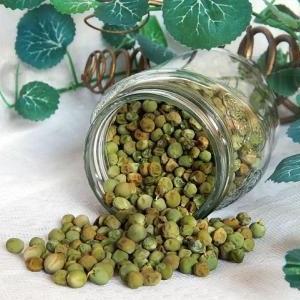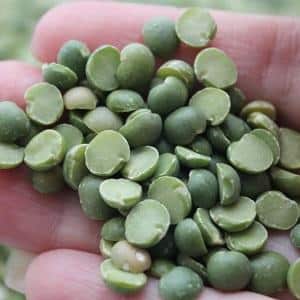How to prepare peas for seeds
On gardening forums, gardeners often share their impressions of seeds purchased in a store. It turns out that many are unhappy with them. Either the manufacturer does not supply the seeds in the package, or they sell them at a high price, or the seeds turn out to be old and do not germinate well. These problems do not concern those who prepare seed material on their own.
From our article you will learn how to prepare pea seeds for future sowings.
Benefits of homemade seeds
Which There are advantages to self-procurement of seed material:
- you will be confident in the variety (especially if it is your favorite);
- control of storage conditions;
- the opportunity to propagate rare varieties;
- noticeable savings (no need to spend money on purchasing planting material).
Which variety to choose
 When you come to a garden store, your eyes widen at the variety of varieties. And it’s easy to get lost in this diversity.
When you come to a garden store, your eyes widen at the variety of varieties. And it’s easy to get lost in this diversity.
In order not to get lost in the sea of pea varieties, we suggest growing varieties with good yield, from which you can then collect your grains.
For example:
- Alpha;
- Gloriosa;
- Ambrosia;
- Oscar;
- Faith.
Attention! Just don't pick peas from pea hybrids (F1). It's a waste of time. Hybrids retain their quality characteristics in only one generation. The grains will not give the expected result.
When to collect
The most important question in preparing home seeding material is: when to collect peas for seeds. The basic rule is collect pea pods when they are ripe.
Signs of ripe peas suitable for harvesting for planting:
- The inside of the pods is densely filled with peas.
- The surface of the pods begins to become covered with a whitish mesh-like cobweb, and then dries out.
- The lower leaves of the plant begin to dry out when the fruits ripen.
If you find these signs, it’s time to collect seed material.
It will be interesting:
Biological features of peas that are better to know
What are the benefits and harms of peas for humans?
What varieties of peas are there - an overview of the varieties
How to collect
The grain harvesting procedure consists of the following steps:
- Collect the pods.
- Peel them from the husks, freeing the peas.
- Store the seeds.
Important! Select the most beautiful pods for seeds. They will be the key to excellent future harvests.
How to dry
How to dry peas for seeds at home? The best option is if the peas ripen on the bush. If there is no possibility of ripening in the garden, the bushes can be cut with a knife and collected in brooms.
Attention! Do not tear the roots of the plant out of the ground, but dig them up with the top layer of soil. Peas are an excellent green manure; they will enrich the soil with nitrogen.
Better Do not collect seeds or cut bushes for drying in rainy weather or early in the morning due to dew.. Wet pods will reduce the quality of the seeds.
Prepared brooms hang in a dry, dark, well-ventilated place with the tops down. In this position they dry for 15-20 days.
Important! Before drying, remove immature pods from the bushes. They will not produce high-quality planting material, and they will take away the strength of the bush.
Where and how to store
When the pods are dry, they need to be peeled – remove the peas. It is better to immediately sort the resulting material: remove defective or damaged seeds.
If the peas are not dry enough, you should dry them completely (3-5 days). After all, if you store poorly dried seeds, they can spoil.
Basic rules for storing dried peas:
- low air humidity;
- tightly closing container;
- there should be no sub-zero temperatures in the room where the seeds are stored. Optimal range: 14-16 degrees.
Attention! If storage conditions are met, peas will remain viable for two to three years.
Protecting peas from pests
 To protect peas from pests, experienced gardeners advise sowing white mustard between the plants. It repels pests during the growth and ripening of peas in the garden. This way, all the pea pods (part of which will later become seeds) will remain clean.
To protect peas from pests, experienced gardeners advise sowing white mustard between the plants. It repels pests during the growth and ripening of peas in the garden. This way, all the pea pods (part of which will later become seeds) will remain clean.
Also adding good results to the furrows when planting peas, add a pinch of red hot pepper.
Pea seeds can be damaged by pea weevil. This is a grayish-brown beetle up to 0.5 cm in size. Pea grains are a “winter” home for weevil larvae that gnaw through the seed coat.
How to save seeds from pea weevil? First of all, follow the agricultural practices of growing crops and select varieties that are resistant to weevil damage. Good results are achieved by early sowing and harvesting.
It will be interesting:
Let's sum it up
To get a good pea harvest next year, take care of the planting material in advance and prepare it yourself. We looked at how to properly leave peas for seeds. To do this, it is recommended to choose the strongest and best-bearing plants in a growing bed.
It is desirable that the grains ripen on the bush. Store seeds in a cool and dry place. If all conditions are met, the seeds will remain viable for several years.